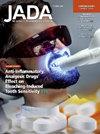Gingival enlargements
IF 3.5
2区 医学
Q1 DENTISTRY, ORAL SURGERY & MEDICINE
引用次数: 0
Abstract
Background
The terminology used to describe gingival enlargements (GEs) has changed considerably over the past several years. The definitions based on histology, morphology, and other characteristics have become obsolete, and the accepted terminology is gingival enlargement. The authors aim was to explore the clinical importance of GEs.
Types of Studies Reviewed
The authors searched electronic databases (ie, PubMed, Ovid, Embase, Web of Science, and Google Scholar) for studies that were focused on GEs and their previous synonyms and published from January 1, 1950, through January 31, 2025.
Results
The authors found articles in which researchers elucidated the etiologic, pathophysiologic, and histologic aspects of GEs. They also discovered some consensus on the management of these conditions.
Conclusions
The term gingival enlargement is the most accepted terminology and appears to be the most correct scientifically. Identifying the etiologic factor for GEs is crucial. Management of GEs varies from rigorous plaque control to surgical modalities.
Practical Implications
Knowledge about the various contributing factors, clinical manifestations, histologic appearances, and differences in management strategies is important. Prompt diagnosis and referral of these entities is paramount for the overall improvement of oral and general health.
规模化、牙龈
背景:在过去的几年中,用于描述牙龈肿大(GEs)的术语发生了很大的变化。基于组织学,形态学和其他特征的定义已经过时,而接受的术语是牙龈扩大。作者的目的是探讨GEs的临床重要性。综述的研究类型作者检索了电子数据库(PubMed、Ovid、Embase、Web of Science和b谷歌Scholar),寻找1950年1月1日至2025年1月31日期间发表的关于基因及其先前同义词的研究。结果作者发现研究人员阐明了GEs的病因学、病理生理学和组织学方面的文章。他们还发现了对这些疾病管理的一些共识。结论“牙龈扩大”是最被接受的术语,也是最科学正确的术语。确定GEs的病因至关重要。GEs的治疗从严格的斑块控制到手术方式各不相同。实际意义了解各种致病因素、临床表现、组织学表现和治疗策略的差异是很重要的。及时诊断和转诊对全面改善口腔和全身健康至关重要。
本文章由计算机程序翻译,如有差异,请以英文原文为准。
求助全文
约1分钟内获得全文
求助全文
来源期刊

Journal of the American Dental Association
医学-牙科与口腔外科
CiteScore
5.30
自引率
10.30%
发文量
221
审稿时长
34 days
期刊介绍:
There is not a single source or solution to help dentists in their quest for lifelong learning, improving dental practice, and dental well-being. JADA+, along with The Journal of the American Dental Association, is striving to do just that, bringing together practical content covering dentistry topics and procedures to help dentists—both general dentists and specialists—provide better patient care and improve oral health and well-being. This is a work in progress; as we add more content, covering more topics of interest, it will continue to expand, becoming an ever-more essential source of oral health knowledge.
 求助内容:
求助内容: 应助结果提醒方式:
应助结果提醒方式:


